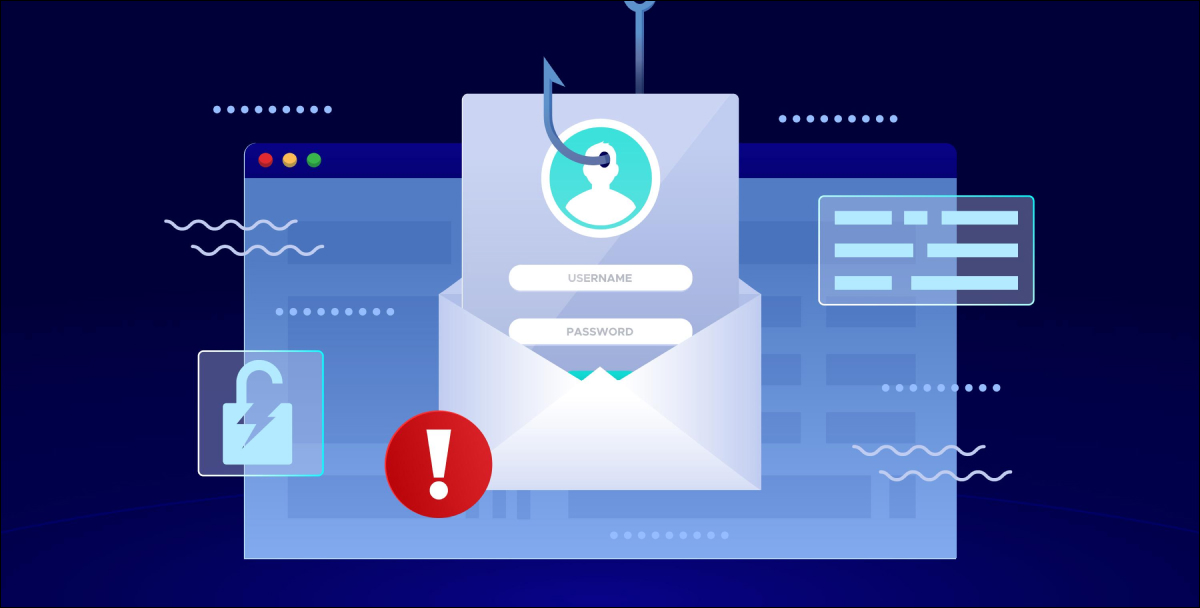
Password Cyberattack: Everything You Need to Know
Cybersecurity leaders consistently rank passwords among the top concerns, recognizing them as critical gateways to sensitive data but also as prime targets for malicious entities.
Home / Blog / Uncategorized / Email Phishing in ICS: The Threat That Still Remains

Even as the digital revolution continues to reshape industries, a significant portion of the ICS/OT sector remains vulnerable to cyberattacks, with email phishing as a persistent challenge.
Cloudflare’s recent data provides a telling snapshot: over one-third of all cyberattacks are linked to deceptive links. These aren’t just minor digital nuisances but potential breaches for hackers to infiltrate systems that underpin our critical infrastructure. And while big names like Microsoft find themselves impersonated in 9.9% of phishing attempts, the threats to ICS/OT systems are more intricate.
The cyber landscape is evolving, with attackers leveraging deep insights into the ICS/OT sector. They’re crafting emails that don’t just mimic brands but mirror communications from trusted equipment vendors. It’s easy to visualize: an email, seemingly an update for essential machinery, arrives. Every element, from its design to its phrasing, appears authentic. But within its lines could lie a malicious intent poised to disrupt operations.
But this isn’t merely a digital challenge; it’s a real-world concern. The potential disruptions these threats pose could have tangible impacts. And this raises a pivotal question: How can organization leaders navigate these challenges, safeguard critical infrastructures, and steer ICS/OT systems toward a more secure future in the digital realm?
Internal communications, often seen as the trusted backbone of an organization, have emerged as a concealed threat in the cybersecurity landscape. Hoxhunt’s research has thrown a spotlight on this vulnerability, revealing that deceptive emails, designed to look like genuine internal communications, pose a significant risk. In fact, these misleading emails have an 11.4% higher chance of breaching critical infrastructure organizations than the global average.
But why are these internal communications so effective for attackers? The answer lies in trust. Employees are conditioned to view contacts from within their organization as safe. When an email appears to come from a colleague or a department head, the inherent trust often leads to lowered guards, making it easier for phishing attempts to succeed.
This elevated risk underscores the pressing need to bolster internal communication protocols. Simple measures, such as using digital signatures for internal emails or implementing two-factor authentication for accessing internal communication platforms, can make a significant difference.
A single compromised email from a trusted vendor can set off a domino effect, leading to a series of adverse outcomes that can jeopardize the entire infrastructure.
While the immediate thought might be deceptive links, the threat landscape is broader and more insidious. Emails from vendors, given their trusted status, can serve as perfect carriers for malicious updates or tools. These aren’t just regular malware but can be tailored tools designed to exploit specific vulnerabilities within the ICS/OT environment.
The Colonial Pipeline attack in May 2021 stands as a grim testament to the scale of devastation that can ensue from such compromises. It wasn’t just about the immediate disruption; the ripple effects were felt across industries and households, highlighting the fragility of our interconnected systems. And all it took was a single compromised credential, underscoring the magnitude of risk associated with vendor communications.
To mitigate such threats, organizations need to re-evaluate their vendor communication protocols. This includes rigorous vetting processes, continuous monitoring of vendor communications, and, perhaps most importantly, educating employees about the potential risks associated with seemingly innocuous vendor emails.
Data from Cloudflare reveals that an alarming 89% of unwanted emails bypassed standard security protocols like SPF, DKIM, and DMARC. In the critical ICS/OT sector, where operational stability is paramount, such vulnerabilities can have catastrophic consequences beyond just data breaches.
The current reliance on domain verification is proving insufficient. Instead, the emphasis should be on a more comprehensive approach that goes beyond just checking domain authenticity. This means implementing advanced content inspection techniques that scrutinize the actual content of messages for malicious intent. Such techniques could involve:
Hoxhunt’s research also offers insightful revelations about the resilience of the critical infrastructure sector in the face of cybersecurity challenges. Notably, phishing simulation training is emerging as a potent tool in this battle. A remarkable 66% of employees in this sector could identify and report a genuine malicious email after just a year of undergoing such training. This isn’t merely a data point; it signifies the sector’s escalating vigilance against cyber threats.
This heightened awareness isn’t spontaneous. It’s rooted in the rigorous regulatory environment these organizations operate within. Beyond mere compliance, it’s about constructing a robust defense, layer by layer. Employees stand as the vanguard of this protective shield. Their proactive stance towards threat detection, which surpasses other industries by a significant 20%, speaks volumes about the sector’s steadfast dedication to cybersecurity.
Further emphasizing the sector’s prowess, Hoxhunt’s simulations revealed that these organizations excel at identifying deceptive phishing attempts. They boast a 10.9% success rate in detecting these simulated attacks, a figure that notably outperforms the global average of 7.2%.
The efficacy of training is undeniable. A year post-training, individuals in this domain are 65% less susceptible to falling for simulated phishing ploys. This underscores that consistent training not only imparts knowledge but also sharpens the alertness of workers to emerging threats. The emphasis on continuous learning is paramount, especially given the dynamic nature of cybersecurity challenges.
Interested in learning the latest techniques to secure your organization against cyberattacks? Explore CIP Cyber Training & Certifications.

Industrial Cybersecurity
September 28, 2023
Want always be up to date?
By subscribing to our mailing list, you will be enrolled to receive our new trainings, latest blog posts, product news, and more.
Transform your cybersecurity skills with CIP Cyber’s comprehensive training & course offerings

Cybersecurity leaders consistently rank passwords among the top concerns, recognizing them as critical gateways to sensitive data but also as prime targets for malicious entities.

The Internet of Things (IoT) is reshaping our world. As sectors ranging from healthcare to manufacturing integrate IoT technology into their operations, we can expect

OPSWAT, a global leader in critical infrastructure protection (CIP) cybersecurity solutions, recently released its 2023 State of Web Application Security report. The report reveals that
Want always be up to date?
By subscribing to our mailing list, you will be enrolled to receive our new trainings, latest blog posts, product news, and more.
Transform your cybersecurity skills with CIP Cyber’s comprehensive training & course offerings